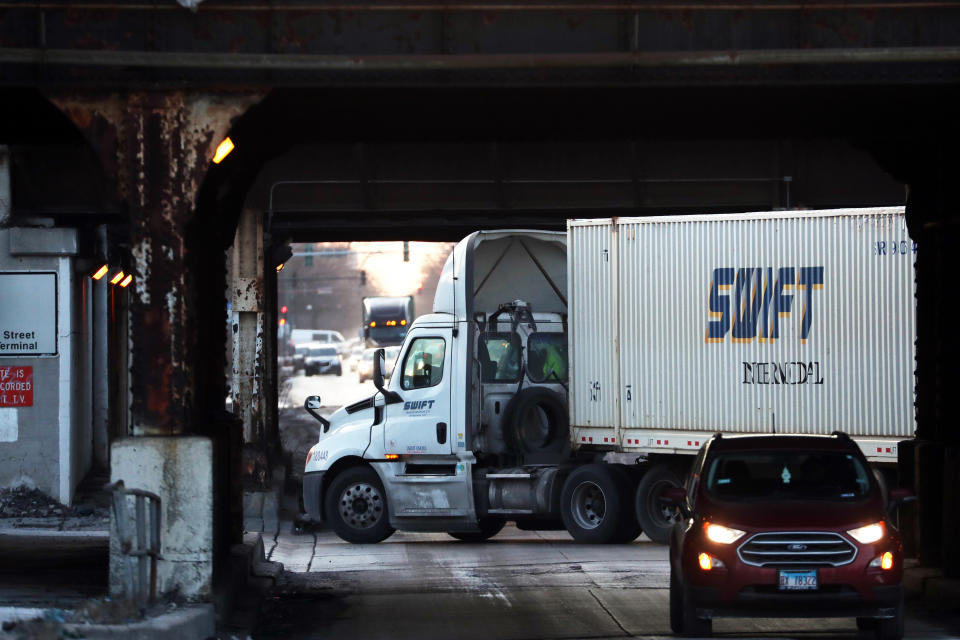EPA’s proposed limits on soot would lead to cleaner factories and vehicles in Chicago and other cities

New limits on lung-damaging soot proposed by President Joe Biden’s administration would effectively require cleaner factories, power plants and vehicles in Chicago and several other urban industrial centers across the Midwest.
At the urging of his independent scientific advisers, Michael Regan, administrator of the U.S. Environmental Protection Agency, is pushing to lower the annual standard for the deadly air pollutant to 9 micrograms per cubic meter of air, down from the current restriction of 12 micrograms per cubic meter.
Regan estimated during a Tuesday call with reporters that the proposed changes would provide up to $77 in health benefits nationwide in 2032 for every dollar polluters spend to clean up their operations.
Soot, also known as fine particulate matter, can penetrate deep into the lungs and trigger myriad health problems including cancer, heart disease, respiratory ailments, diabetes and brain damage, shaving years off lives. The type of soot targeted by the EPA proposal, PM2.5, is so small that thousands of the particles could fit on the period at the end of this sentence.
“The impact of this pollution disproportionately affects our most vulnerable communities, including low-income communities, communities of color, children, older adults, and those who struggle with heart or lung conditions,” Regan said.
In Illinois and nearby states, communities that would violate the new standard include Chicago and its suburbs; Decatur; Rockford; Milwaukee; Gary, Indianapolis and Evansville, Indiana; Detroit, Grand Rapids and Kalamazoo, Michigan; and the St. Louis metro area, according to a Chicago Tribune analysis of monitoring data from 2000 through 2022.
Chicago ranks 3rd in US in deaths and health costs related to diesel pollution, analysis shows
Iowa and Minnesota are the only Midwest states where all counties would meet the more stringent soot standard.
The final list of scofflaws will be based on pollution data collected during the next few years. Regan noted that soot levels generally are declining nationwide, but he said a growing body of research shows the current standard fails to adequately protect public health.
Some environment and public health groups clamored for an even tougher standard of 8 micrograms of soot per cubic meter of air. Breathing soot above that limit leads to more than 21,000 deaths and 3,000 cases of lung cancer each year, according to a study published last year in the Annals of the American Thoracic Society.
The EPA’s own regulatory analysis concluded that setting the limit at 8 micrograms would prevent 9,200 premature deaths annually, compared with 4,200 premature deaths prevented each year at 9 micrograms.
“Any way you look at this issue, tens of thousands of people are needlessly losing their lives every year, including many in areas that meet existing (standards),” Brian Urbasewski, director of environmental health programs at the Chicago-based Respiratory Health Association, told the White House Office of Management and Budget during a November meeting.
Aware that new soot regulations were on the horizon, industry groups have been airing television ads and lobbying members of Congress with many of the same arguments they made during past battles about clean air rules.
Maps produced by several trade groups depict most of the nation affected by the Biden EPA’s proposal, despite monitoring data showing the dire forecast isn’t grounded in readily available information.
Statements from the American Petroleum Institute and U.S. Chamber of Commerce implored the EPA to maintain the current soot standard, which both organizations insisted when it was adopted would bankrupt the U.S. economy.
Strengthening the soot standard, the oil industry trade group said, “is the latest in a growing list of short-sighted policy actions that have no scientific basis and prioritize foreign energy and manufacturing from unstable regions of the world over American jobs, manufacturing, and national security.”
By contrast, Earthjustice, an environmental group that backs the Biden administration’s proposal, recently conducted an analysis that found cities have boosted their economies while reducing soot pollution. In the Chicago metropolitan area, for instance, annual soot levels declined by 11.5% between 2012 and 2021 while the unemployment rate declined by 3% and the gross domestic product increased by by 10.4%, the analysis showed.
Other studies have determined that reducing soot pollution would particularly benefit low-income Black and Latino communities near highways, railways and industrial facilities.
A 2014 Tribune analysis found that nearly 340,000 people, including 38,000 children younger than 7, live within a half-mile of one of the region’s intermodal terminals that transfer freight between diesel locomotives and trucks. More than 80% are Black or Latino.
Diesel soot costs the region more than $3.7 billion a year in hidden health costs, according to a 2022 analysis by the Clean Air Task Force, a Boston-based nonprofit group.
At least 340 people die each year from diseases triggered or made worse by exposure to diesel soot in the metropolitan area that stretches from Kenosha to Naperville to Gary, the group estimated by using a computer model developed by EPA consultants.
Only Los Angeles and New York record more deaths and health costs from diesel soot each year, the group estimated.
“When (industry groups) use these scare tactics to misrepresent the standard,” said Dr. Doris Browne, past president of the National Medical Association, a trade group for Black physicians, “just remember the actual tens of billions in health benefits these strengthened soot pollution limits provide and the people who will be alive because of them.”

 Yahoo Finance
Yahoo Finance 